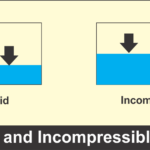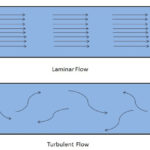Definition of Fluids
In simple words, A substance that has a tendency to flow is called fluids.
But If we talk in fluid mechanics then it is defined as the substance that deforms or flow under the application of applied shear force and continues to deform until the shear force is not removed.
The different types of fluids are:
Basically the fluids are classified into 5 types and these are

1. Ideal fluid
2. Real fluid
3. Newtonian fluid
4. Non-Newtonian fluid, and
5. Ideal plastic fluid
1. Ideal Fluid:
A fluid that can not be compressed and have no viscosity falls in the category of an ideal fluid. Ideal fluid is not found in actual practice but it is an imaginary fluid because all the fluid that exists in the environment has some viscosity. there is no ideal fluid in reality.
2. Real Fluid:
A fluid that has atleast some viscosity is called real fluid. Actually all the fluids existing or present in the environment are called real fluids. for example water.
3. Newtonian Fluid:
If a real fluid obeys the Newton’s law of viscosity (i.e the shear stress is directly proportional to the shear strain) then it is known as the Newtonian fluid.
4. Non-Newtonian Fluid:
If the real fluid does not obey Newton’s law of viscosity then it is called Non-Newtonian fluid.
5. Ideal Plastic Fluid:
A fluid having the value of shear stress more than the yield value and shear stress is proportional to the shear strain (velocity gradient) is known as ideal plastic fluid.
The graph between the shear stress and velocity gradient for the different types of fluids are given below:









